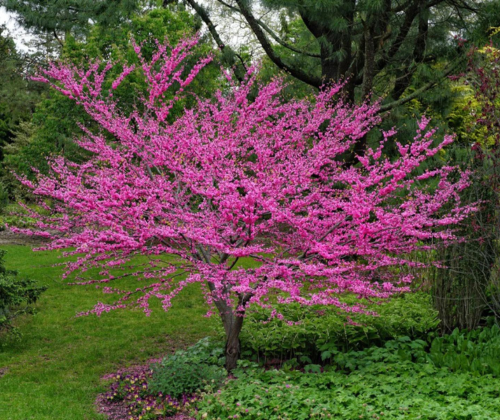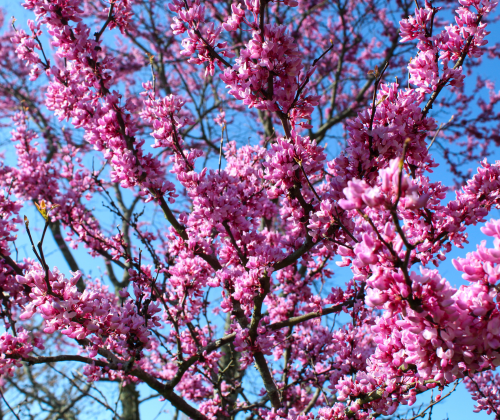Red Bud
Redbud Cercis canadensis OR Cercis reniformis
The Redbud will grow in full sun or dappled shade. A small deciduous tree 20 foot by 10 foot when mature will bloom during spring in shades of purple, pink, or white, followed by seed pods. The Oklahoma cultivar (Cercis reniformis) performs better than the Texas cultivar (Cercis canadensis). Most nurseries keep in stock a proven variety, Cercis canadensis commercially called Forest Pansy Redbud.
Cercis canadensis, is the eastern redbud, is a deciduous, often multi-trunk understory tree with a rounded crown that typically matures to 20 feet tall with a slightly larger spread. It is particularly noted for its pea-like rose-purple flowers which bloom on bare branches in early spring (March-April) before the foliage
emerges. This tree is native to Parker County. It is found in open woodlands, thickets and on the edge of pasture land. Flowers are ½” wide blooms in clusters on the bare limbs. Flowers are followed by flattened bean-like dry seedpods that mature in summer. Pods may remain on the tree into winter providing food for wildlife. The deep green leaves will turn pale yellow to greenish-yellow in fall. Cercis canadensis is the state tree of Oklahoma, but don’t let that stop you from placing one or more of these nice trees in your landscape. Redbuds in a landscape can have significant disease problem: cankers, verticillium wilt, dieback, leaf spots, mildew and blights may occur. Insect pests include Japanese beetles, tree hoppers, leaf hoppers, caterpillars, borers, webworms and scale. The tree can be kept healthy with minimal, but regular watering, compost, mulch, and pruning out dead branches. Even with it’s issues, the redbud is a great small tree for a lawn or patio garden.


